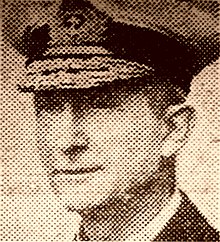|
George Egerton (Royal Navy officer)
Admiral Sir George Le Clerc Egerton KCB (17 October 1852 – 30 March 1940) was a senior Royal Navy officer from the Egerton family who rose to become Second Sea Lord. Naval careerEgerton joined the Royal Navy in 1866.[1] He served on the Arctic Expedition of 1875–76.[1] In 1893 he was promoted to captain and appointed a naval attaché before serving with the Naval Brigade in Mombasa in 1895,[1] and he was chief of staff for the Benin Expedition of 1897.[1] By early 1900 he was in command of the pre-dreadnought battleship HMS Majestic, serving as flagship to Vice-Admiral Sir Harry Rawson, commander-in-chief of the Channel Fleet.[2] In June 1901 he was transferred to the President for service as assistant director of torpedoes at the Admiralty,[3] a position he left the following February when he transferred to the torpedo school ship Vernon.[4] He was appointed second-in-command of the Atlantic Fleet in 1906:[1] Egerton flew his flag on HMS Victorious, with Captain Robert Scott as his flag captain.[5] He became commander-in-chief, Cape of Good Hope Station in 1908 and Second Sea Lord in 1911.[1] He served in World War I as Commander-in-Chief, Plymouth.[1] He had previously served as aide-de-camp to King Edward VII, and retired in 1916.[1] FamilyA grandson of The Rev Sir Philip Grey-Egerton, 9th Bt, he married, first, in 1882, Frances Emily Gladstone; they had two sons and a daughter, including Rear-Admiral Brian Egerton (1886–1973). He married, second, Margaret Stella Maunsell, in 1932.[6] References
External links
|
||||||||||||||||||||||||
